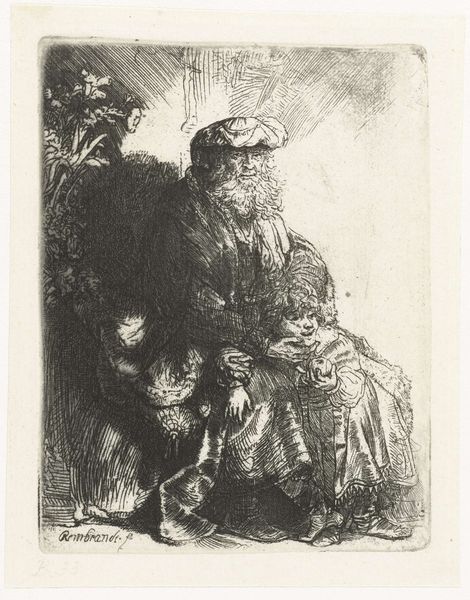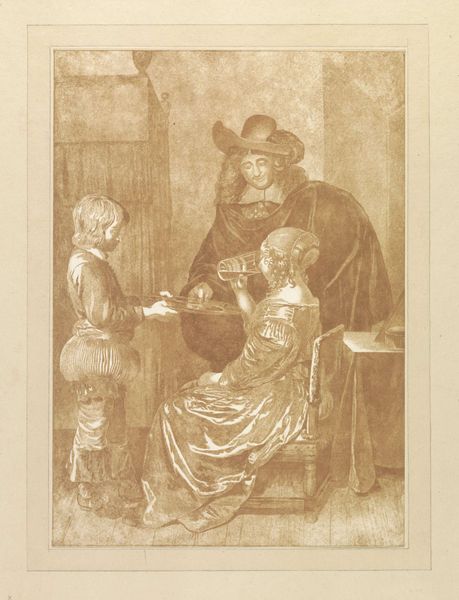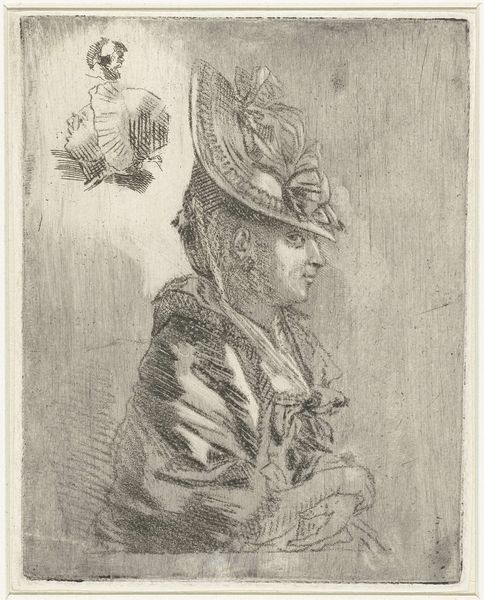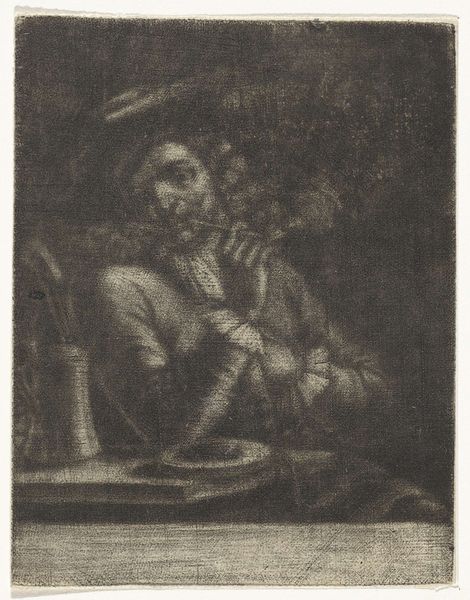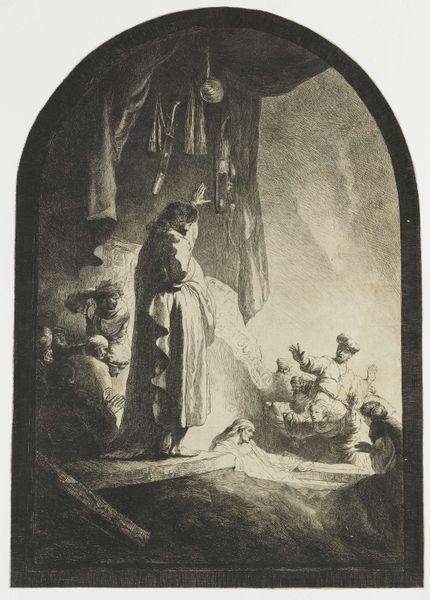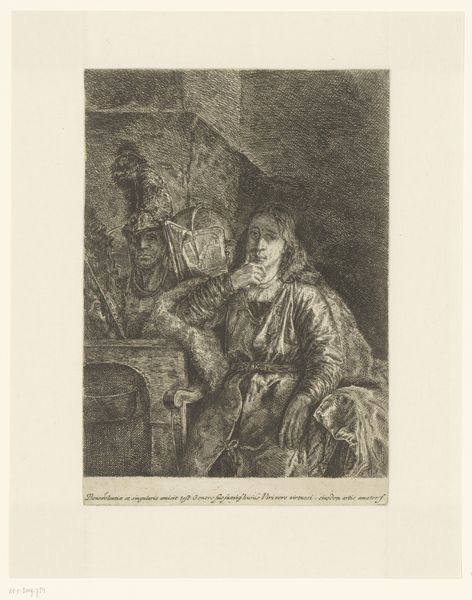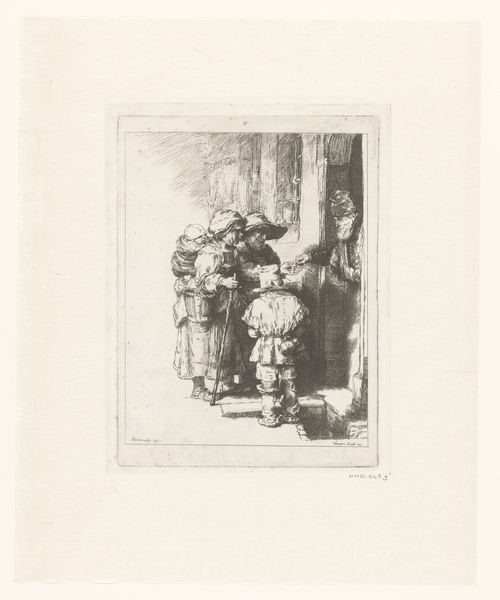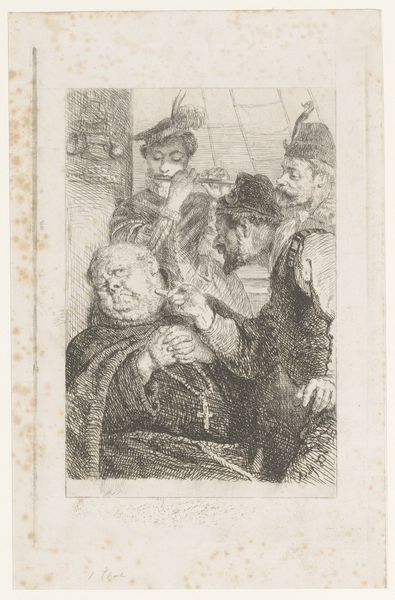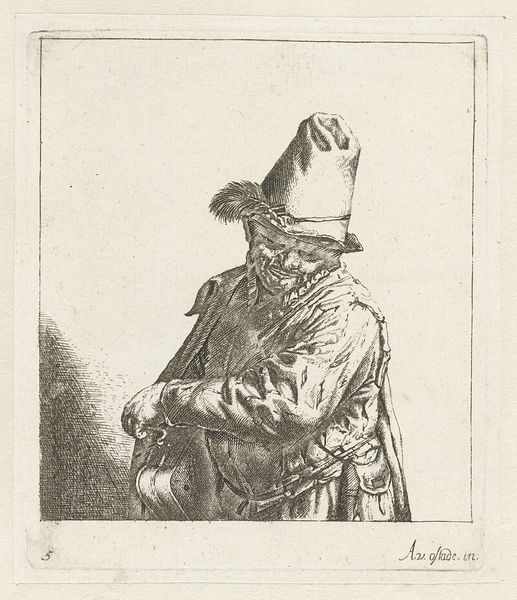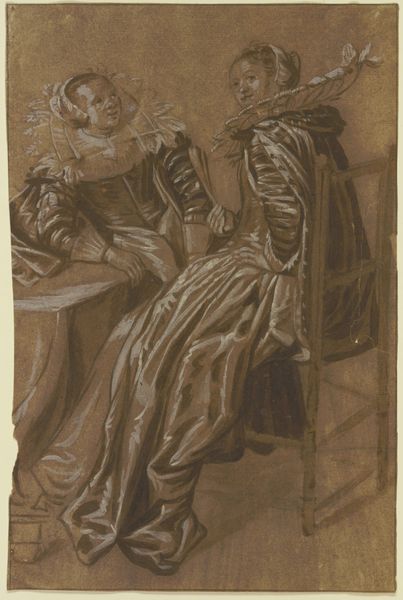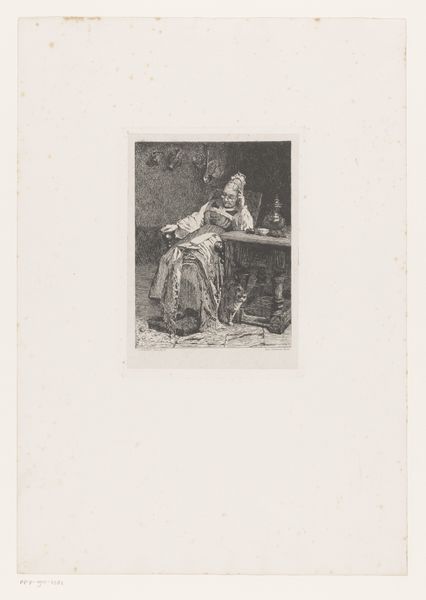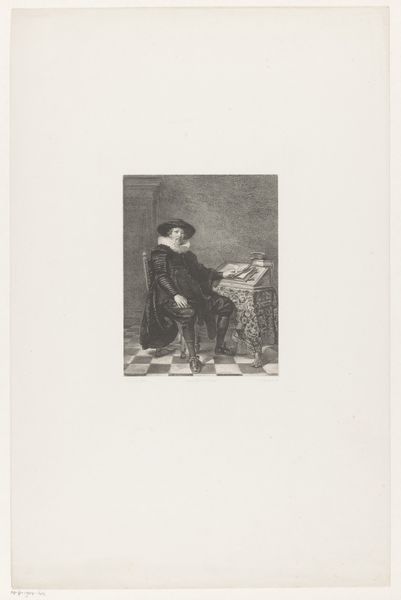
drawing, print, etching, glass
#
drawing
# print
#
etching
#
glass
#
intimism
#
genre-painting
Dimensions: height 399 mm, width 291 mm
Copyright: Rijks Museum: Open Domain
Curator: I'm immediately drawn into the somber mood of this piece; there's such an air of domestic intimacy. Editor: Indeed. What we have here is an etching from Rijksmuseum’s collection. It's entitled "Heer en dame met page," or "Lord and Lady with Page," and is credited to Cornelis Brouwer, though the precise date is debated, possibly sometime between 1779 and 1828. Curator: That date is quite the spread, isn’t it? Looking closer, I can definitely sense echoes of earlier masters, like Rembrandt. It shares his manipulation of light and shadow, that introspective quality. I wonder if those artistic precedents held societal meaning too. Editor: Without a doubt. Genre scenes like this, depicting everyday life, were incredibly popular. Think about what this domestic sphere would signify to viewers then. Was it aspiration, social commentary, a glimpse into the values of the Dutch middle class at the time? The inclusion of a page tells its own story about privilege. Curator: That page, his posture almost frozen. In this tableau of domestic life, you have wealth subtly on display but perhaps even exploitation lingering in the periphery of the symbols and archetypes involved. Editor: Absolutely. These visual cues are key to deciphering what values were not only celebrated but silently enforced by the artwork within the time that it circulated, reaching potentially broad audiences. Brouwer has used a layered technique, etching to create tonality. Notice the heavy ink in areas, and the starker shading in the subjects' clothes. It's beautiful. Curator: The composition seems to pull you in multiple directions, your eye gravitating from figure to figure within their own sphere of darkness and light. There's a real tension there. Editor: A tension that, as you suggested earlier, is very Rembrandtesque and very consciously embedded into how the composition performs as social allegory, speaking both broadly and intimately, especially because of the relative inexpensiveness and circulation of these prints. Curator: It’s amazing how a seemingly simple scene can hold so many layers, reflections of social norms, power dynamics, and artistic heritage all at once. Editor: Precisely. By focusing on those layers, this print really does spark critical inquiries around a society's identity through its image production.
Comments
No comments
Be the first to comment and join the conversation on the ultimate creative platform.
